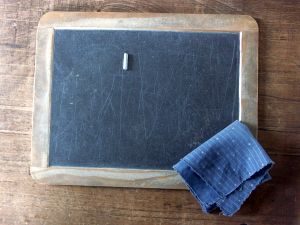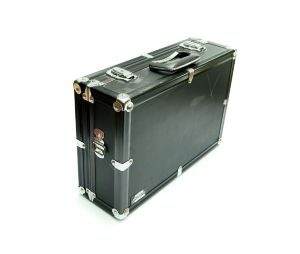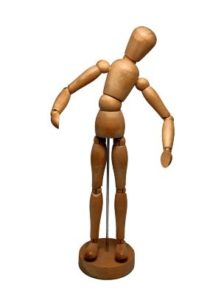1. Wipe the slate clean

This is a wonderful visual way of symbolically ‘seeing’ our mistakes wiped away.
You will need: a large cross made from two pieces of cardboard or preferably thin wood, blackboard paint, a box of chalks, a damp cloth.
Make a large cross from two pieces of cardboard or preferably thin wood and then paint it with blackboard paint. Invite each person to draw on the cross in chalk a very simple picture to represent something that has broken: a heart, the name of someone they have fallen out with, maybe a tree for the state of the planet, and so on. Encourage everyone to do this as quietly as they can. This is an enjoyable activity, but it is also about saying sorry for the things we have done wrong. When each person has finished, hold the cross up and explain that because of this cross, which represents the cross of Jesus, all our sins have been wiped away. Receiving forgiveness means that the slate is wiped clean. As you are explaining this, take a damp cloth and wipe the cross clean.
For more creative ideas see Margaret Withers and Tim Sledge, Creative Communion: Engaging the whole church in a journey of faith, BRF, 2008, p69.
2. Heavy loads
 Illustrate with 5-6 items of varying weights, and a large sack or suitcase with bulky parcels, how some loads we carry can be seen and how some loads we carry cannot be seen, like when we feel worried about something. This activity includes an action prayer.
Illustrate with 5-6 items of varying weights, and a large sack or suitcase with bulky parcels, how some loads we carry can be seen and how some loads we carry cannot be seen, like when we feel worried about something. This activity includes an action prayer.
You will need: 5-6 items of varying weights, a large sack or suitcase filled with bulky parcels.
First, ask the children to guess which is the lightest and heaviest of the items you’ve brought along, making the point that largest shape is not necessarily the heaviest and the smallest is not necessarily the lightest. Then have another leader struggle in with a large sack or suitcase full of bulky heavy parcels. You will need to comment on how weighed-down they look and ask them whether they need help unloading these bulky items in order for them to sit down comfortably. Some loads we carry can be seen, like the parcels, but some loads we carry can’t be seen – like when we feel worried about something and we carry our worry around with us and it feels quite heavy. (Whilst talking about various worries, pick up different parcels to illustrate the different loads we carry.) Ask what kinds of things we sometimes worry about. Ask the children to share their ideas about this; share with them some of the things you worry about as well, so that you are all in this together. Talk about the different loads we carry – eg, being frightened or being sad. What kind of things are we frightened or sad about? Talk about these together, assuring all that Jesus is never too busy to listen to us and doesn’t want us to struggle with our heavy loads all the time.
Finish with either: an action prayer together for younger children:
Heavy loads (pretend to carry them)
‘I’m worried!’ and ‘I’m scared!’ (head in hands, then shake with fright)
‘Come to me,’ says Jesus, (beckon)
‘And I will give you rest!’ (arms out, palms up)
Thank you, thank you, Jesus! (jump up and down and clap hands)
You really are the best! (both hands up in the air)
or
Jesus, in you I find rest and peace.
I can talk to you about anything –
My worries and my fears,
My happiness and sadness,
My anger and disappointment.
You always listen and you always understand.
Thank you that you reassure us of your love.
Susan Sayers, Living Stones: The all-age resource for the Common Worship Lectionary Year A Complete Resource Book, Kevin Mayhew Ltd, 1998, p163.
3. A ‘Godly Play’ style confession – I wonder…
 Godly Play is a wonderful way of nurturing spiritual formation and development through storytelling for all ages, not just children.
Godly Play is a wonderful way of nurturing spiritual formation and development through storytelling for all ages, not just children.
Sit on the floor in a circle. Learn by heart the Parable of the Unforgiving Servant (Matthew 18.21-35) so you can tell it well as a story. Use wooden models, puppets or dolls to play the characters. At the end invite all to ‘wonder’ what they think about all that they’ve just heard.
Suggested questions might be:
- I wonder what part of this story you like the best?
- I wonder what part of this story you think is the most important?
- I wonder if you are in this story and if the story is in you?
- I wonder if there is any part of this story that you would like to leave out … and still have all the story you need?
- I wonder if you have come close to this?
- I wonder where this might be when it’s not there?
- I wonder if you have seen something like this?
- Depending on the material: I wonder if you have touched/smelled/heard something like this?
For more information, visit the Godly Play website.
